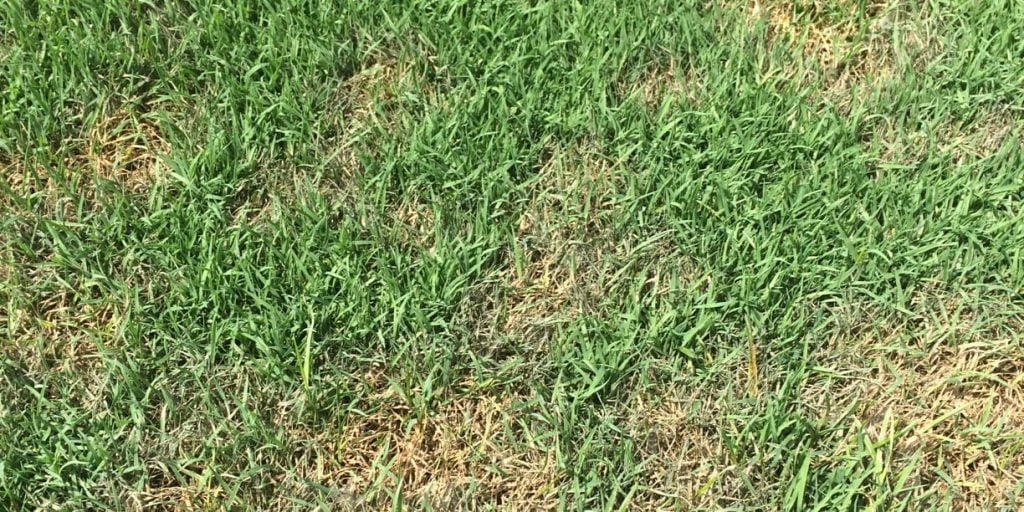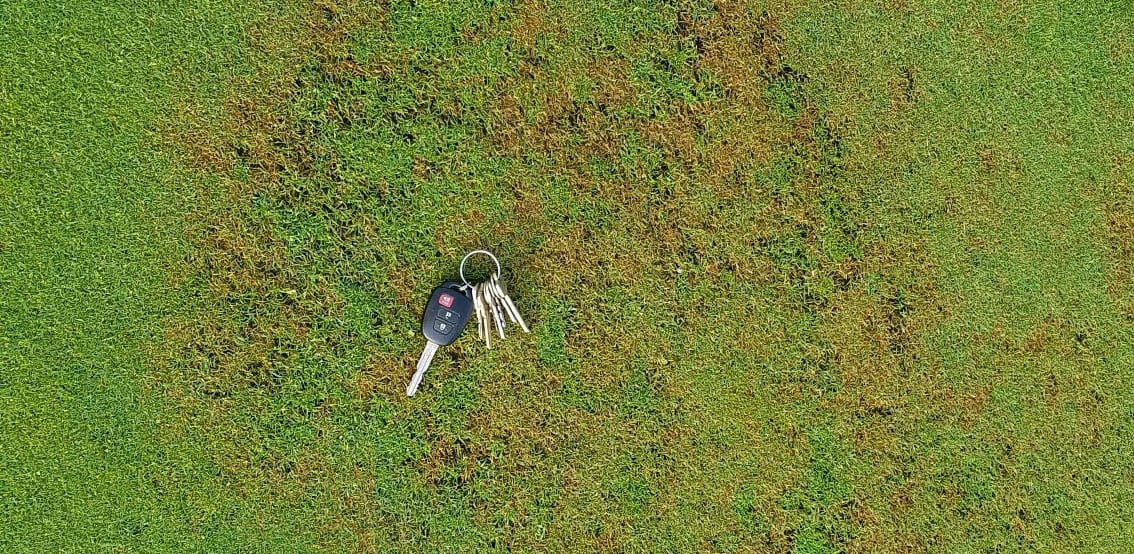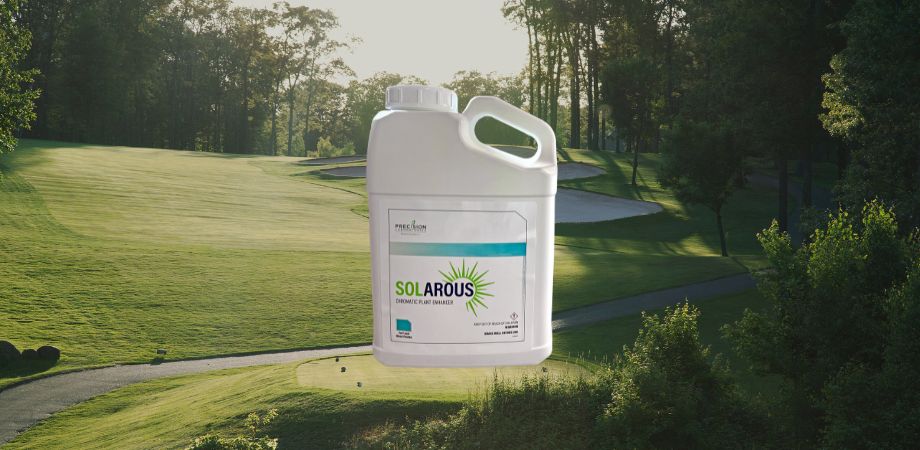While Pythium root rot and Pythium root dysfunction are both related to Pythium, there are important differences between the two. We’ll cover the biology, symptoms, and preventative measures for both diseases, beginning with Pythium root rot. We’ll also cover the major differences between the two diseases at the end of the post.
What is Pythium Root Rot
Pythium root rot (PRR) is a disease that attacks turfgrass roots and causes decay, and as the name implies, rotting. The disease is brought on by water mold pathogens (Oomecytes) and primarily affects cool-season grasses like creeping bentgrass. The pathogens thrive in wet conditions, making turf drenched by long periods of rainfall a prime candidate for the disease.
Pythium Root Rot Symptoms and Timing
Roots infected with PRR will have an unpleasant odor, will be soaked with water, and will appear brown. On the surface, turf may exhibit dead patches, thinning, and/or yellowing along the surface in streaks.

PRR typically becomes active in the springtime on cool-season putting greens before becoming more prevalent in the summer. While the disease can appear at any time, it will often appear when soil temperatures are above 60°F at a depth of two inches, and heat stress will exacerbate symptoms.
Pythium Root Rot Treatment
Cultural Prevention
Although PRR thrives in wet, hot conditions, soil saturation is all the disease needs to appear. Preventing overwatering and maintaining proper drainage are the best cultural methods for Pythium root rot prevention. On golf course greens, venting can help introduce more airflow and drainage.
Prevention with Fungicide
Start preventative fungicide applications in May when soil temperatures reach 55-60°F. Pay special attention to areas where the disease has occurred before. Choosing the best fungicide for Pythium root rot won’t be challenging, since there are several preventative fungicides specifically designed for Pythium control, including CYA 345, Serata, and Insignia SC.
See an example fungicide program below:
- Apply Insignia SC Intrinsic at 30.5 oz/acre and Signature Xtra Stressgard at 11 lbs/acre.
- Two weeks later, apply Banol fungicide at 2 fluid ounces per thousand square feet and 11 lbs/acre of Signature Xtra Stressgard.
What is Pythium Root Dysfunction
Pythium root dysfunction (PRD) is a turf disease that, like PRR, can appear at any time of the year on creeping bentgrass putting greens. It attacks turf during stressful periods, like hot summer weather and drought. The disease is caused by the Pythium volutum oomecyte pathogen (not a fungus) and reduces the amount of water and nutrients turf can absorb.
Pythium Root Dysfunction Symptoms and Timing
Roots infected by PRD will exhibit a tannish color and lack root hairs. Root depth will also be affected, but infected roots won’t begin to die until soil temperatures reach 85°F and higher. Above-ground symptoms include asymmetrical patches of tannish, discolored turf that vary in size up to two feet in diameter and may appear wilted. Diseased turf will collapse and appear orange later in the disease’s lifecycle.
Pythium root dysfunction typically begins infecting roots in the spring, when soil temperatures reach around 54°F and above. Treatment during the spring will allow fungicides to prevent summer symptoms.
Pythium Root Dysfunction Treatment
Cultural Prevention
Proper aeration will help water and oxygen move through the soil, reducing the risk of stress. Raising mowing heights above .125” in the summer can also help reduce stress and increase photosynthetic activity. Properly irrigating areas that are hydrophobic and using soil surfactants can help superintendents avoid drought-related stress, too.
Prevention with Fungicide
Preventative applications should be made monthly, beginning in the spring. Many of the same fungicides used to treat PRR, including Insignia SC, Serata, and Zoxy 2F, can also be used to treat Pythium root dysfunction.
If curative control is needed, CYA 345 is labeled for both preventative and curative treatment of Pythium root dysfunction. Mix the product with a penetrant wetting agent and water in at least ⅛-inch of irrigation. Curative applications should be made every 14 to 28 days, with timing dependent on how often symptoms appear.
Main Differences Between PRR and PRD
Pythium root rot infects roots, causing them to rot. PRR primarily infects turfgrass during the summer months. Pythium root dysfunction prevents root hairs from growing and generally infects turf during the fall and spring.
While both diseases have characteristics that set them apart from each other, they can both cause major damage to your course. If you’re looking for more information on best practices and products used to prevent and treat PRR and PRD on your course, reach out to your ATS rep.












